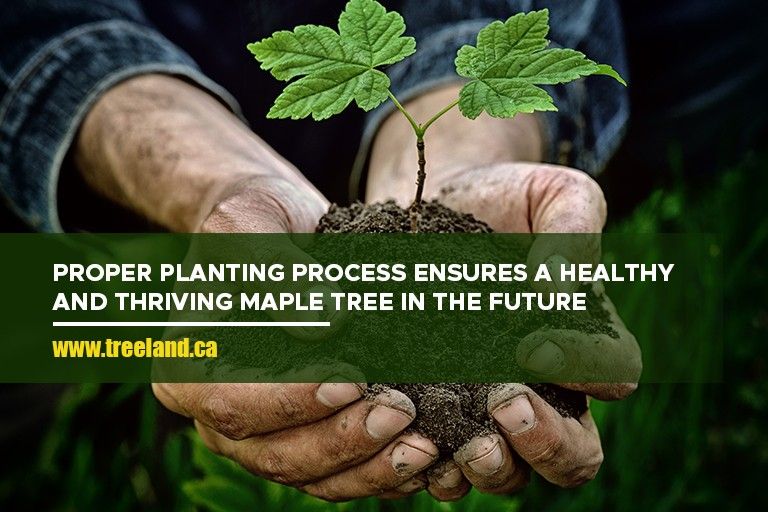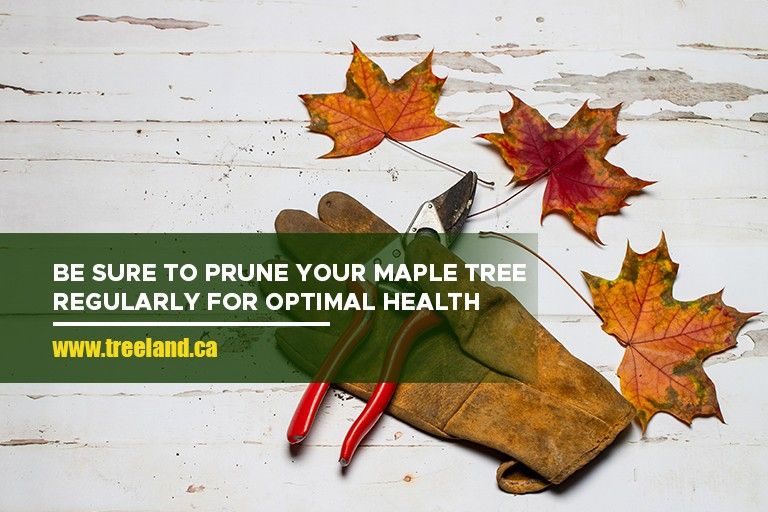Maple trees hold a special place in the hearts of many Canadians. Their vibrant foliage in the fall paints landscapes with hues of red, orange, and gold, creating picturesque scenes that are truly breathtaking. However, to achieve this natural masterpiece, proper planting and care of maple trees are essential. In this guide, we will delve into the intricacies of maple tree planting and provide you with the essential know-how to cultivate and maintain these majestic trees in your backyard.
Understanding Maple Trees
There are various maple tree species, each with its unique characteristics and appeal. From the classic Sugar Maple to the graceful Red Maple, there’s a maple tree for every landscape. When selecting the best maple trees to plant, consider factors such as the size of your yard, soil conditions, and climate.
Before diving into the planting process, it’s crucial to understand the different maple tree varieties available. Some popular options include the Silver Maple, Norway Maple, and Japanese Maple, each offering distinct foliage and growth patterns.
Preparing for Planting
Proper preparation is key to successful maple tree planting. Begin by assessing your landscape to determine the ideal location for your maple trees. Choose a spot with adequate sunlight, as most maple trees thrive in partial to full sun conditions. Additionally, ensure the soil is well-drained and nutrient-rich to support healthy growth.
Soil Preparation Tips
- Loosen the Soil
Begin by gently working the earth with a sturdy shovel or garden fork, breaking up compacted layers and creating a welcoming environment for root growth. By aerating the soil, you facilitate better water drainage and air circulation, vital for healthy root development and overall tree vitality.
- Incorporate Organic Matter
Introduce a rich blend of compost, nutrient-rich leaf mould, or well-aged manure into the soil. This natural infusion enriches the earth, enhancing its structure and fertility. The organic matter serves as a nourishing source of nutrients, fostering robust root systems and promoting lush foliage.
- Test the pH Levels
Utilize a reliable soil testing kit to analyze the acidity or alkalinity levels of your soil. Understanding the pH balance is essential, as it directly influences nutrient availability and uptake by your maple trees. With this insight, you can make informed adjustments, ensuring an optimal environment for your trees to thrive and flourish.
Planting Process

Once you’ve selected the perfect location and prepared the soil, it’s time to plant your maple trees. Begin by selecting healthy maple tree saplings from a reputable nursery or supplier. Look for trees with well-developed root systems and sturdy trunks, indicating their vitality and potential for growth.
Planting Maple Trees: Steps
- Dig a Hole
Begin by carving out a space that is not merely a receptacle for your sapling but a carefully prepared haven for its roots to expand and thrive. Make the hole generously wide, almost double the diameter of the root ball, and ensure its depth mirrors that of the sapling’s container. This spacious cradle allows the maple tree roots ample room to spread out and establish a strong foundation.
- Remove the Sapling
Handle your sapling with utmost care, as its delicate roots are the lifeblood of its future growth. Gently extract the sapling from its container, taking extra caution to preserve the integrity of the roots. A meticulous approach during this step pays dividends in the sapling’s ability to seamlessly acclimate to its new environment.
- Position the Sapling
As you delicately cradle your sapling, envision the future majesty it will bring to your landscape. Place the sapling with precision in the heart of the prepared hole, ensuring that it rests at the same depth it occupied in its container. This thoughtful placement sets the stage for optimal growth, aligning the sapling with the conditions it has grown accustomed to.
- Backfill the Hole
With your sapling snugly in place, the next step involves nurturing its surroundings. Fill the excavated hole with soil, but don’t merely deposit it. Gently press the soil around the roots, eliminating any lurking air pockets that might hinder the sapling’s integration into its new home. This tactile connection with the soil provides a secure environment for the roots to take hold.
- Water Thoroughly
Immerse your newly planted maple tree with a generous and nurturing dose of water. This deep watering not only quenches the immediate thirst of the sapling but also plays a crucial role in settling the soil around the roots. Establishing this initial hydration connection promotes a harmonious relationship between the sapling and its newfound environment.
- Apply Mulch
As a final touch, cocoon your maple sapling in a layer of organic mulch, choosing materials such as wood chips or shredded bark. This protective embrace serves a dual purpose – conserving precious moisture around the base of the tree and acting as a natural barrier against invasive weeds. The mulch, like a guardian, shields your sapling as it begins its journey towards maturity.
Caring for Maple Trees

Maple tree care extends beyond the initial planting phase. Proper maple tree maintenance is essential to ensure the long-term health and vitality of your trees. Regular pruning helps shape the tree and remove dead or diseased branches, promoting new growth and airflow within the canopy.
Maple Tree Care Tips:
- Prune During the Dormant Season
It’s best to wait until late winter or early spring to prune your beloved maple trees. During this period, they are less susceptible to stress and disease, ensuring optimal healing and growth once the pruning cuts are made.
- Use Sharp, Clean Tools
Employing sharp pruning shears and saws is paramount. These tools facilitate precise cuts that heal swiftly, significantly reducing the risk of infection and promoting the overall health of your majestic maple trees.
- Monitor for Signs of Maple Tree Pests and Diseases
Vigilance is key in safeguarding your maple trees against common adversaries like aphids, scale insects, and fungal diseases. Regular inspections allow you to spot any early indicators promptly, enabling swift and effective action to preserve the vitality and beauty of your cherished maples.
Seasonal Care and Maintenance
Maple trees have unique care requirements throughout the year. In the winter, protect young trees from frost and cold temperatures by wrapping the trunk with burlap or using tree guards. As spring approaches, adjust your maple tree watering and fertilization routines to support new growth and budding leaves.
Seasonal Care Factors:
- Monitor Soil Moisture Levels
Regularly check the soil moisture using a moisture meter or by simply digging a few inches into the soil. This is especially crucial during hot, dry weather when evaporation rates are high. Ensure the soil remains consistently moist but not waterlogged. Deep watering is key to reaching the root zone effectively, allowing the roots to absorb moisture and nutrients efficiently.
- Apply a Balanced Fertilizer
When selecting a fertilizer for your maple trees, opt for a slow-release formulation designed specifically for trees and shrubs. This type of fertilizer gradually releases nutrients over time, providing a steady supply of essential elements for healthy growth. Apply the fertilizer in early spring before new growth begins, following the recommended application rates based on the size and age of your trees.
- Mulch Around the Base of the Tree
Create a protective mulch layer around the base of the tree to conserve soil moisture, regulate soil temperature, and suppress weed growth. Apply a 2- to 4-inch layer of organic mulch such as wood chips, shredded bark, or compost, extending it out to the drip line of the tree canopy. Be sure to leave a gap between the mulch and the tree trunk to prevent moisture buildup and potential rot. Replenish the mulch as needed to maintain adequate depth and effectiveness throughout the growing season.
Long-Term Growth and Health
As your maple trees mature, they may require occasional transplanting to accommodate their growing root systems and canopy. When transplanting, take care to minimize root disturbance and provide adequate support to prevent shock and stress.
Tips for Long-Term Maple Tree Health:
- Conduct Regular Inspections
It’s crucial to inspect your maple trees annually for signs of damage, stress, or disease. Take the time to walk around your property and closely observe the foliage, branches, and trunk of each tree. Look for any abnormalities, such as discoloration, wilting leaves, or unusual growth patterns. By conducting thorough inspections, you can identify potential issues early on and take proactive measures to address them, preventing further damage and promoting the overall health of your maple trees.
- Consider Consulting With an Arborist
While regular inspections are essential, sometimes you may encounter issues that require professional expertise. That’s where a certified arborist comes in. These tree care specialists possess in-depth knowledge and experience in diagnosing and treating a wide range of tree problems. By consulting with an arborist, you can gain valuable insights and recommendations tailored to the specific needs of your maple trees. Whether it’s pruning techniques, disease management strategies, or soil analysis, an arborist can provide expert guidance to help you maintain the health and beauty of your beloved maple trees for years to come.
- Implement a Proactive Approach to Pest and Disease Management
Prevention is key when it comes to identifying and managing pests and diseases in your maple trees. Instead of waiting for problems to arise, take a proactive approach by practicing good cultural practices. This includes ensuring proper watering, fertilization, and pruning techniques to promote strong, resilient trees that are less susceptible to pests and diseases. Additionally, consider implementing integrated pest management (IPM) strategies, such as planting pest-resistant tree varieties, using biological controls, and maintaining a healthy ecosystem in your landscape. By adopting a proactive approach to pest and disease management, you can minimize stress on your maple trees and reduce the risk of infestations or outbreaks, preserving their beauty and longevity for generations to come.
Planting and caring for maple trees is a rewarding endeavour that yields beautiful rewards year after year. By following these essential guidelines, you can cultivate a thriving maple tree landscape that enhances the beauty of your outdoor space.
For those seeking premium maple trees for sale in Toronto and expert advice on landscaping, nurturing, and cultivating your own maple haven, look no further than Caledon Treeland. With our commitment to quality and dedication to customer satisfaction, we’re here to help you transform your outdoor space into a vibrant and picturesque sanctuary. Contact us at (905) 880-1828 to explore our wide selection of high-quality maple trees and embark on your journey to creating a stunning landscape that will be the envy of your neighbourhood. Let’s bring your maple tree dreams to life together!

